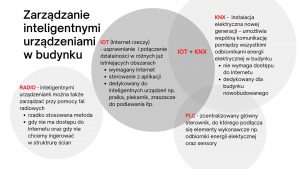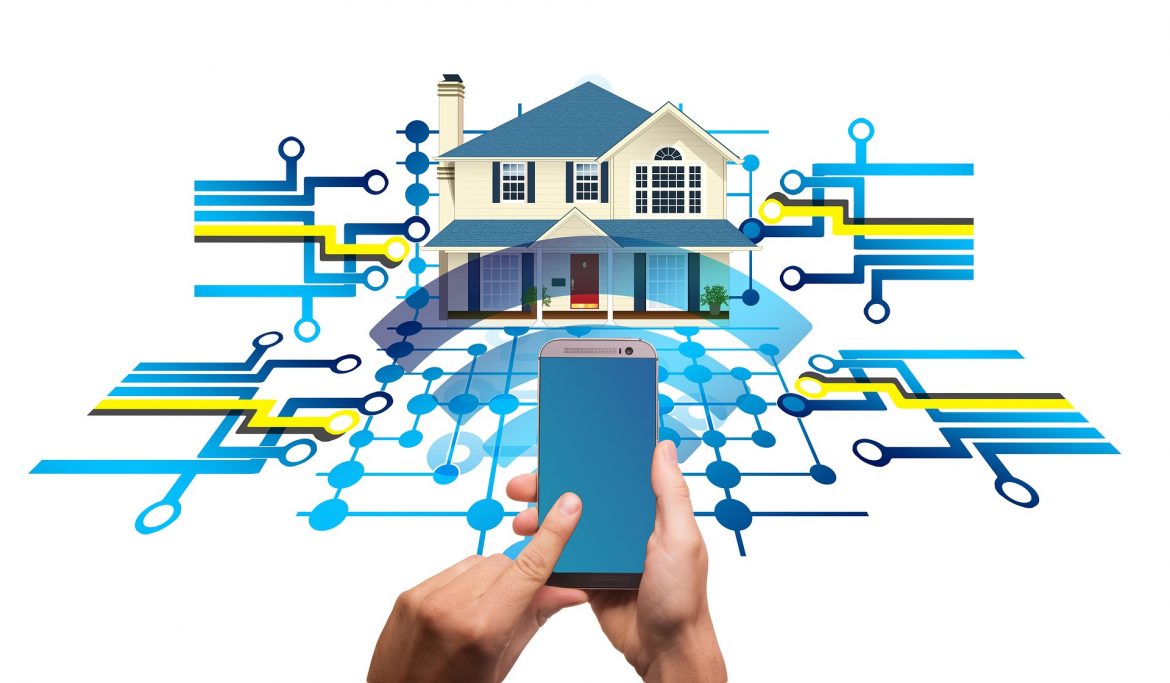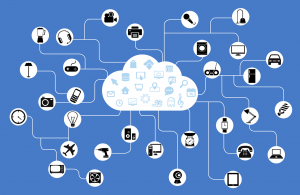Hasło „inteligentny dom” przewija się w naszej codzienności coraz częściej. Automatyczne rozwiązania w budynkach są bardzo popularne, ze względu na komfort, oszczędności oraz bezpieczeństwo jakie mogą nam zapewnić. System zarządzania budynkiem znajduje zastosowanie w obiektach przemysłowych, biurowych oraz prywatnych. Ale właściwie o co chodzi z tymi inteligentnymi urządzeniami?
Co to jest inteligentny dom?
Tzw. „smart home” oznacza budynek, który podczas jakiś zdarzeń, np. włamania czy zmiany środowiska automatycznie wykonuje określone czynności. Inteligentny dom, a właściwie system składający się z inteligentnych urządzeń, które w nim są, reaguje na zmiany. Taki system składa się z wielu elementów. Wysoko zaawansowane technicznie budynki mogą mieć ich całkiem sporo. Rolą inteligentnego systemu w budynku jest automatyzacja, integracja, kontrola, monitoring, optymalizacja oraz przygotowywanie raportów z działań.
Z czego składa się inteligentny system?
Urządzenia, które składają się na inteligentny dom tworzą cały system i mogą zawierać następujące elementy:
- Serwer– urządzenie, do którego podłączamy wszystkie urządzenia smart home Odpowiada za uruchamianie automatyzacji. Może umożliwiać integracje z innymi systemami smart home.
- Czujniki – urządzenia dokonujące pomiaru otoczenia, np. temperatury, wilgotności, stężenia dwutlenku węgla, zalania, światła, otwarcia itp.
- Inteligentne urządzenia wykonawcze – urządzenia, które potrafią wykonać jakąś akcję, przekaźniki do załączenia oświetlenia, podnoszenia rolet, termostaty do załączenia ogrzewania, pralki, odkurzacz itp. Mogą być zintegrowane z różnymi czujnikami.
- Kontrolery – urządzenia pozwalające na manualne sterowanie inteligentnymi urządzeniami, odczytywanie wartości z czujników i konfigurowanie automatyzacji, np. smartfon.
- Oprogramowanie – odpowiadające za wszelkie inteligentne działania udostępnione przez system w budynku.
- Sieć LAN – w nowoczesnych instalacjach smart home jest to istotny element odpowiadający za stabilność i bezpieczeństwo jakie może zapewnić inteligentny dom.
- Mostki/bramki – urządzenia łączące czujniki lub inne urządzenia z centralką. Pomocne jeśli na przykład dany czujnik nie działa z daną centralką.
Inteligentny dom – jaki model zarządzania nim wybrać?
Spośród wielu możliwości zarządzania inteligentnymi urządzeniami, w budynku można spotkać jedno z poniższych usprawnień lub połączenie tychże rozwiązań:
- IOT (Internet rzeczy) – usprawnianie i połączenie działalności w różnych już istniejących obszarach; wymagany Internet; sterowanie z aplikacji; dedykowany do inteligentnych urządzeń np. pralka, piekarnik, zraszacze do podlewania itp.
- KNX – instalacja elektryczna nowej generacji – umożliwia wspólną komunikację pomiędzy wszystkimi odbiornikami energii elektrycznej w budynku; nie wymaga dostępu do Internetu; dedykowany dla budynku nowobudowanego.
- RADIO – inteligentnymi urządzeniami można także zarządzać przy pomocy fal radiowych; rzadko stosowana metoda; gdy nie ma dostępu do Internetu oraz gdy nie chcemy ingerować w strukturę ścian.
- PLC – zcentralizowany główny sterownik, do którego podłącza się elementy wykonawcze np. odbiorniki energii elektrycznej oraz sensory.
Czy każdy dom może być inteligentny?
Tak naprawdę, to każdy budynek może być inteligentny. Zaawansowane technicznie rozwiązania można zastosować zarówno w mieszkaniu, sklepie, biurowcu jak i w magazynie. Jednak największe znaczenie ma to, czy budynek już dawno wybudowano, czy też jest dopiero w planach.
NOWY BUDYNEK
Inteligentne inwestycje najlepiej zaplanować już na etapie projektowania. Warto zaplanować instalację elektryczną tak, aby nie stanowiła ona problemu podczas automatyzacji w przyszłości. Warto od razu zamontować głębsze puszki podtynkowe, aby zmieścić sterowniki. Dużo bardziej efektywne będzie ułożenie instalacji elektrycznej od każdego urządzenia do centralnego miejsca, i stamtąd do włączników naściennych. Każdy inteligentny dom ma swoje „centrum rozdzielcze” w postaci osobnego pomieszczenia lub dużej szafki.
BUDYNEK Z HISTORIĄ
W przypadku budynku już istniejącego, warto wykorzystać moment remontu generalnego na zaplanowanie automatyki domowej. Oprócz głębszych puszek warto zastanowić nad infrastrukturą LAN. Jeden punkt dostępowy wifi, w przypadku inteligentnego domu zdecydowanie może nie wystarczyć. W przypadku budynków, w których nie można bardziej ingerować w strukturę ścian, niektóre urządzenia można podłączyć bezprzewodowo.

Kiedy wracasz do swojego inteligentnego domu…
Wyobraź sobie, że masz inteligentny dom… Wracasz do niego i jednym przyciskiem pilota rozbrajasz alarm, włączasz oświetlenie zewnętrzne, otwierasz bramę wjazdową, a następnie garażową. Wjeżdżasz do garażu , a system zamyka za Tobą wszystkie bramy i wyłącza światło! Wygodne rozwiązanie, prawda? Oprócz tego, system zadba o wyższą temperaturę w pomieszczeniach, abyś mógł czuć się komfortowo!
To nie wszystko! Zaczęło padać i wieje wiatr. Nie musisz przejmować się pogodą! System automatycznie zwinie markizy i zamknie uchylone okna…
Masz ochotę na wieczór filmowy? Wystarczy jedno dotknięcie ekranu manipulatora, aby uruchomić zaprogramowany scenariusz. Twój system stworzy idealne warunki do seansu.
A kiedy nadchodzi noc…
Po miłym wieczorze przed ekranem, za jednym kliknięciem możesz wyłączyć zbędne oświetlenie, opuścić rolety oraz uzbroić alarm. Kiedy Ty śpisz, system może zadbać o Twoje bezpieczeństwo. Ale nie tylko! Automatyka zaopiekuje się także Twoimi roślinami! Jeśli czujnik wilgoci wskaże zbyt niski poziom nawodnienia gleby, system automatycznie uruchomi zraszacze lub podlewanie kropelkowe. O automatycznym podlewaniu przeczytasz tutaj.
Nocne wędrówki do kuchni czy innych pomieszczeń będą bezpieczniejsze dzięki czujkom na ruch, które uruchomią oświetlenie na niższy poziom mocy.
A gdy pod Twoim domem pojawi się nieproszony gość i spróbuje przedostać się na teren posesji, system uruchomi scenariusz alarmu, by skutecznie zniechęcić intruza. Sygnalizator donośnym dźwiękiem spłoszy włamywacza, a Ciebie obudzi, byś mógł zareagować! Jednocześnie oświetlenie zewnętrzne włączy się, aby intruz był lepiej widoczny dla Ciebie i kamer. Oczywiście, natychmiast otrzymasz powiadomienie na komórkę!
O poranku…
Tej feralnej nocy jeszcze spadła temperatura poniżej 0°. O poranku system otwierania rolet łagodnie wybudza Cię ze snu. Jeśli wciąż jest ciemno, włącza delikatnie światło. Oblodzona ścieżka czy podjazd to nie problem. System z odpowiednim wyprzedzeniem zadba o to, byś mógł bezpiecznie wyjść z domu i wyjechać samochodem.
Opuszczasz swój inteligentny dom? Wybierz scenariusz „wyjście z domu” i w jego ramach system zamknie główny zawór wody, wyłączy zasilanie gniazdek elektrycznych, a także obniży temperaturę w pomieszczeniach do ekonomicznego poziomu. Następnie otworzy bramę garażową i wjazdową. Wyłączy także światło w budynku. Wyjeżdżając, za pomocą jednego przycisku możesz zamknąć okna, bramy, opuścić rolety. Na sam koniec system uzbroi się, tzn. włączą się czujki ruchu, które chronią przed ewentualnym włamaniem. Twój inteligentny dom jest skutecznie chroniony!
Jeśli nie wrócisz na noc, istnieje możliwość symulacji obecności w domu domowników. Może to skutecznie zniechęcić włamywaczy!
Stwórz własny komfort razem z Cetel!
Jak widzisz, Twoje życie może być bardzo wygodne. Zaopatrz się tylko w dobrze zidentyfikowane potrzeby, szczyptę wyobraźni, moc pomysłów i IQ Twojego domu zaskoczy Cię mile jeszcze nie raz! Stwórz swój własny świat w rytmie Twojego życia razem z Cetel!

